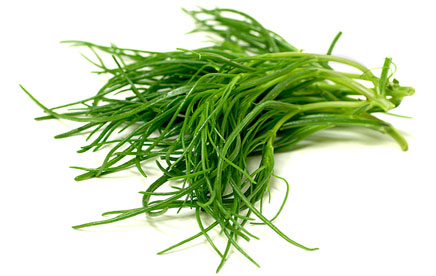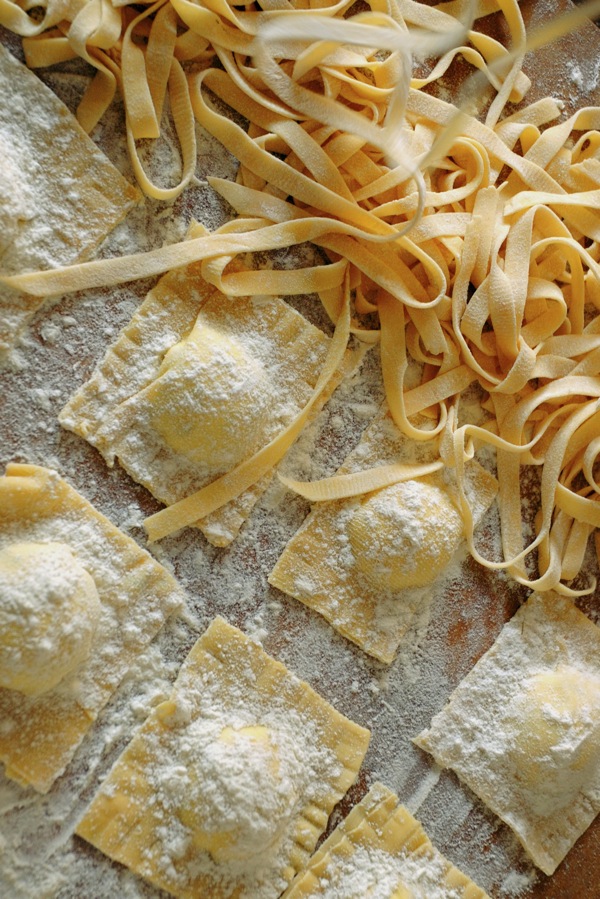Agretti, meaning little sour one, is a salty-like heirloom herb with a succulent texture and a pleasantly acidic bite. I predict agretti soon to be a very popular green in the US. Originating in the mediterranean, it is now being harvested in California and available at Italian specialty markets. You may also see it identified at roscana aka in Italy.
It has a short harvest season in early spring. You'll find them packed in bunches that resemble the grass like look of spring chives. Agretti is best eaten when young and enjoyed fresh or cooked.

Simply served chopped and tossed fresh in mixed salads for a slightly salty crunch. To cook, chop and sauté with olive oil, garlic and pepperchino as great by itself or mixed, better yet served with a little fresh pappardelle - to make fresh parpadelle use my Ricotta Dough Recipe, below.
 For more of George's Good Stuff Picks - Just Click!
For more of George's Good Stuff Picks - Just Click!
Agretti's botanical name is Salsola soda, a relative to the tumbleweed, Salsola tragus. Ukrainian immigrants settling in the Great Plains are thought to have brought these plants to establish their fragile roots into U.S. soil.
A bit more: Agretti should not to be confused with Russian Thistle - the plant commonly known as Tumbleweed. You wouldn’t want to eat it, the thorns on Tumbleweed would be a little rough on the digestion, even though in times of drought ranchers of yesteryear fed it to cattle during excessive droughts.

Ricotta Pasta Dough | Recipe Chef George Hirsch
3 1/2 to 4 cups all purpose flour, variable
10 ounces ricotta, well drained
2 whole eggs, beaten
1 egg yolk, add to beaten eggs
1/4 teaspoon salt
To Mix By Hand:
Mound 3 1/2 cups of the flour and salt in the center of a large wooden cutting board or use a large deep bowl. Make a well in the middle of the flour, add the ricotta and eggs. Begin to mix all ingredients by hand folding the flour round and round.
The dough will come together when half of the flour is incorporated. At this point, start kneading the dough with both hands, using the palms of your hands.
Once the dough comes together, remove the dough from the bowl and scrape up and discard any leftover bits. Lightly flour the board and continue kneading for 6 more minutes. The dough should be elastic and a little sticky. If too sticky add a little more flour.
Wrap the dough in plastic, refrigerate overnight or allow to rest for at least one hour. Because of the eggs, the Ricotta Dough should be cooked or frozen within three days.
Roll or shape as desired.
From here you can prepare ravioli, fettuccini, pappardelle, or endless variety of shapes.
Divide the dough into four pieces. Lightly dust a large wooden board with flour and roll slightly by hand, repeat dusting with flour flipping dough over as you make it thinner and thinner. The trick is to use just the right amount of flour, too little it will stick, too much and the pasta will become tough when cooked.
A pasta dough machine with metal rollers and cutters is ideal to give you variety of options. But with a little practice by hand, you’ll roll the dough like a pro.



